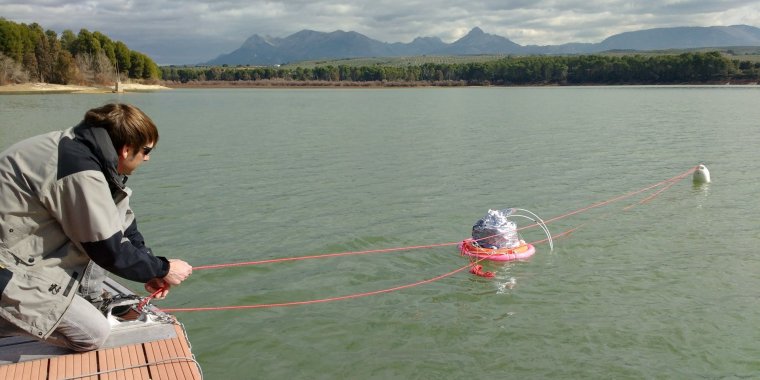| News / Science News |
Scientists study the role of Mediterranean reservoirs as producers of greenhouse gases
A team of scientists from the Department of Ecology at the University of Granada (UGR) has conducted the first-ever study of the carbon dioxide (CO2), methane (CH4), and nitrous oxide (N2O) emissions of 12 reservoirs located in Granada, Jaén, and Córdoba in Andalusia, Southern Spain.

Scientists study the role of Mediterranean reservoirs as producers of greenhouse gases. Foto: University of Granada
Their study demonstrated that reservoirs are important producers of greenhouse gases, contributing to the radiative forcing of aquatic ecosystems. They also found that the geology of the reservoir basin, the depth, and the human pressure on the basin all determine its climatic forcing (the potential to absorb heat in the atmosphere).
Human development has brought with it the construction of reservoirs to provide energy and supply water for human consumption and agricultural irrigation, especially in regions such as the Mediterranean. Spain is the European country with the highest number of built reservoirs.
Such systems have a major social and environmental impact, and, recently, scientists have hypothesized that they act as major sources of greenhouse gases (GHGs).
Studies have been conducted on GHG emissions from reservoirs in boreal and tropical regions, but, to date, there has been a paucity of data covering the Mediterranean biome, despite the proliferation of reservoirs in this area.
Carbon dioxide (CO2), methane (CH4), and nitrous oxide (N2O) are the three most important GHGs of human origin. CO2 is the most widely studied, while much less is known about CH4 and N2O—yet they have a warming potential that is 34 and 298 times higher than CO2 over a 100-year timescale, respectively.
In this study, the scientists observed that reservoirs located in calcareous areas emitted more CO2 into the atmosphere than those located in siliceous areas that, at times, could even be CO2 sinks.
All the reservoirs emitted CH4, which was related to water temperature, reservoir depth, and eutrophication (that is, systems that become ‘green’ due to receiving excess nutrients).
The shallowest, ‘greenest’ systems with the highest water temperature emitted the most methane—a phenomenon that was particularly marked in the case of Cubillas reservoir in Granada. N2O emissions were very high in systems located in agricultural and urban areas that gave rise to large nitrogen inputs.
The highest N2O emissions of all were obtained in the Iznájar reservoir in Córdoba. Watersheds located in areas with a forest cover of over 40% acted as N2O sinks.
The researchers combined the data on emissions of the three gases to obtain their radiative potential, based on their CO2 equivalents.
Overall, they found that Cubillas reservoir presented the highest values for radiative forcing per square metre, while, by total area of the reservoir, it was Iznájar that presented the highest radiative forcing. Furthermore, the forcing was much higher in summer than in winter. (University of Granada)
YOU MAY ALSO LIKE





